Here are my notes for the Visual Communication assignment, based on re-appropriating images. I prefer to hand write notes to begin with so I can use them to type up my final essay.




The category containing all posts for part 3.
Here are my notes for the Visual Communication assignment, based on re-appropriating images. I prefer to hand write notes to begin with so I can use them to type up my final essay.




Twitter is a popular social media platform that can be used for entertainment and also informative purposes. It allows you to see the news and what is trending – allowing you to stay connected with the world. There’s also an element of persuasion as when you see the content you like (text, images, videos etc.) you are encouraged to retweet and share it with others. This allows things to be communicated visually on a global scale and is often how things go viral. Twitter also has the option of making a poll which anyone can interact with – this is a cutting edge way of collecting data about various topics, (like for the upcoming general election). It’s useful because so many people use the platform and are more likely to participate.

Instagram stories are also very interactive and they regularly add new ways of connecting with followers. For instance, people can ask you questions, you may set some sort of quiz, poll or simply share photos, videos and gifs. This level of interactivity keeps people interested and means people can stay updated easily through various visual means.

Netflix is one of the easiest places to watch both films and tv series, with new titles constantly being added. To make it more cutting edge, you can use multiple screens or download it and watch offline on the go. Many people commute so this is a perfect form of ‘portable’ entertainment.
YouTube another popular video streaming platform with an array of content. People can watch videos purely for entertainment or there are also educational videos and tutorials that provide information through visual means. Many creators who started making daily life videos are now branching out to be more creative, producing more high-quality videos. This could be something that is edited to give a more cinematic and aesthetic experience. Additionally, documentary-style videos of much longer durations are also popular and these often provide information about important topics. The ever-changing style of videos means it is a cutting edge platform that is very dynamic.
Amazon also offers Prime Video which is similar to Netflix. However, I think that their Prime delivery service is more cutting edge. It allows you to buy and receive a plethora of items within 24 hours which has revolutionised online shopping. They also offer a service called ‘prime wardrobe’ which allows you to try clothes before actually purchasing them. If you don’t like something you can send it back and only have to pay for the items you wish to keep. This will persuade people to buy from them more as they don’t have to worry about paying for things and wasting money if they don’t like something.

21 Buttons is a fashion social network that is a cutting edge way of shopping. Their ‘shoppable feed’ allows you to see outfits you like and shop them instantly. You can also earn money by sharing your looks if people purchase through the links on your clothes. It is a popular place for social influencers as many get fashion inspiration from them so this is an easy way of finding new items and styles.
Another form of cutting edge media is Virtual Reality which offers a simulated experience, through some sort of headset. The PlayStation VR set is one of the most popular and allows you to immerse yourself in various games, worlds and situations. The purpose can be for entertainment but can also be very educational too.
Augmented reality allows you to interact with the real world in new, digital ways. This is often done through a camera and smartphone. Examples include aiding home design as you can add furniture to an existing room and visualise new interior designs through your phone. AR games are also becoming increasingly popular. For instance, Pokemon Go and Wizards Unite create an interactive experience, joining the physical and digital gaming world together. Augmented reality can also be used for educational purposes – it can help people to learn skills, such as playing the piano.

Virtual assistants are definitely a form of cutting edge technology and media that can assist you in various ways. There are many examples but one of the most used is Siri on Apple iPhones. This also offers visual communication by suggesting ways you can utilise voice assistants. For instance, it encourages you to ask it various questions like setting a reminder, checking the weather or opening a certain app. It can also be used to make Google searches, as a result, it may be for entertainment and informative purposes.
In 1964 Marshall McLuhan established the idea of a media ‘global village’ which describes how electronic communication makes us all feel connected, irrespective of distance time and location. Below is some further information about the term.
Visual Storytelling – taking the viewer on a visual journey, ideas of time and place presented through single or multiple frame images.
I copied the sketch shown in the course materials and this sequence shows movement towards building – it starts from further away and zooms in, then cutting to the interior
To start this exercise, I created this mind-map with some general associations I have with knitting. I’ve not done much knitting myself so don’t have an overly strong opinion of it currently.
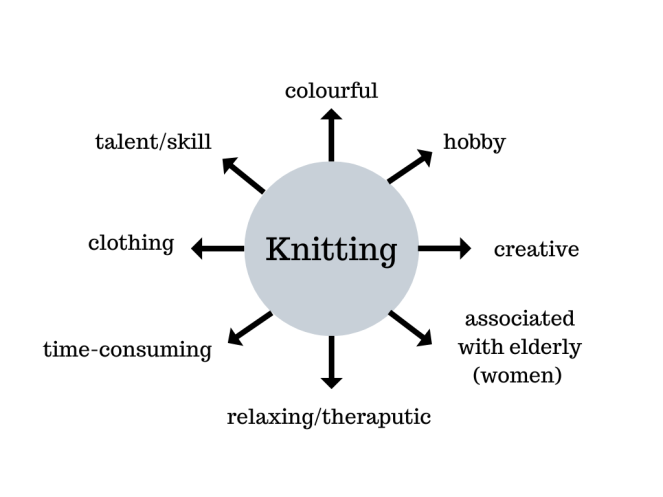
Historical examples of knitting:
The oldest knitted artefacts are socks from Egypt dating from the 11th century. However, the design is complex so the craft of knitting is probably older than the archaeological record can prove.

During the First and Second World War, knitting was more than a hobby, in fact, it was almost patriotic. People (women, men, children, etc.) knitted various items for the troops. Socks were needed in particular to try to combat trench foot. Many people also wrote notes to encourage the soldiers.

Knitting has also been used as a form of activism, for example, suffragists used imagery to further cause and appear non-threatening. In the image below, Alice Paul appeared as a domestic archetype in order to convey the idea that “we’re not going to stop being women if we get the vote.” – Laura Japelly.

Knitting books and magazines were also popular and allowed people to learn the craft. This one is from a vogue 1950 edition.

The aesthetic of knitting was also used as a form of humour and as the design on various cards. This one provides a number of valentine’s themed puns.

Contemporary examples of knitting:
Clothing items have always been associated with knitting and jumpers are one of the obvious pieces. Personally, I always think of Christmas jumpers and the stereotypical ‘ugly’ designs. This image shows Shakin’ Stevens wearing a typical design in his Christmas hit, ‘Merry Christmas Everyone’ from 1985.

Christmas jumpers and their creative, colourful designs are still very popular today. Many people (including workplaces and schools) now participate in Christmas Jumper Day. Below is an image of various TV celebrities advertising ITV’s annual fundraiser.
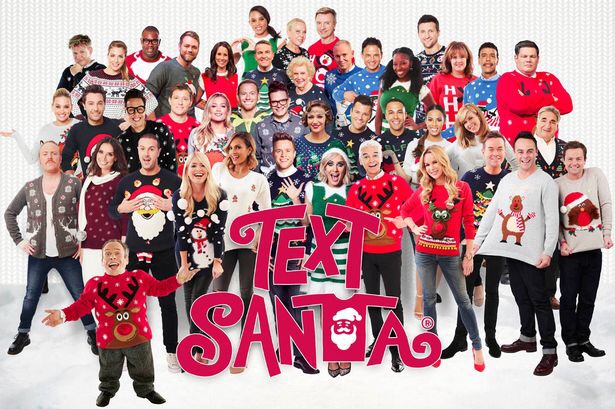
Reading knitting books and magazines is also still popular today. The fact that DIY arts and crafts projects are becoming increasingly popular may also contribute to this. Whilst it’s much easier to learn and get/share advice through the internet, books, like this updated version from Vogue, still remain useful.

The internet has certainly had an impact on knitting and it can now be shared across forms of new media, like podcasts or tutorials on YouTube. This allows people to access information wherever and whenever.
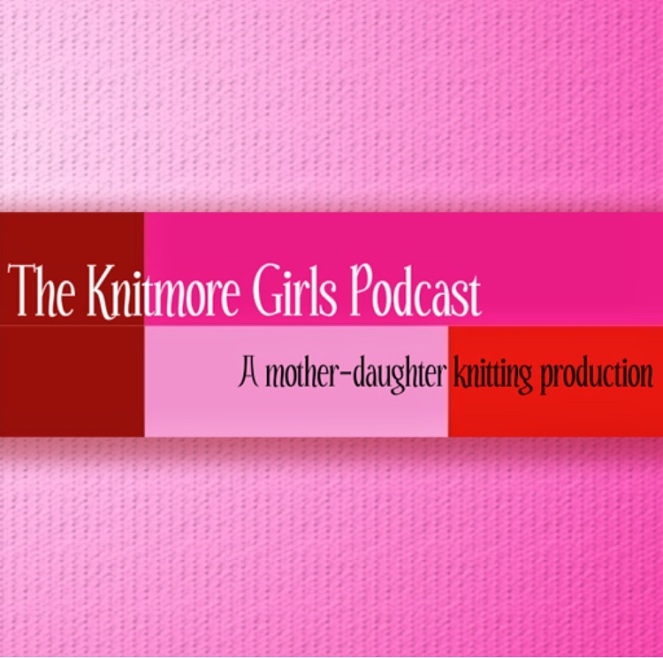
Yarn Bombing is a form of knitted street art that is said to be founded by textile artist, Magda Sayeg (first got the idea in 2005.) Her work evolved from small scale crafts, like a single knitted stop sign pole and the craft has since spread worldwide. Now you can find many examples of large installations, such as this bus in London.
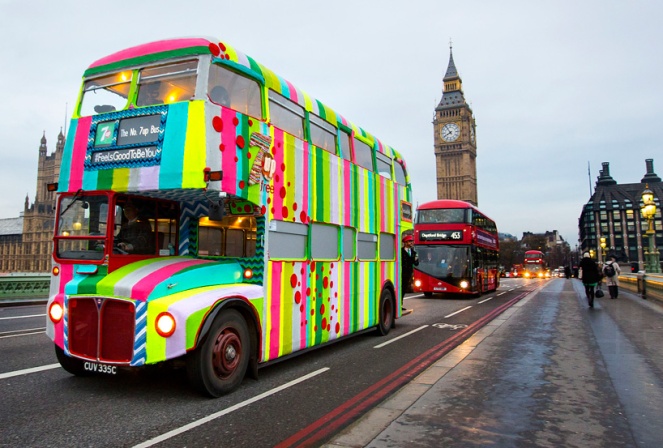
How do these examples support/contradict the associations made in the mind map? Is there a general stereotype of knitting and how have contemporary images challenged this?
All of these examples certainly back up my opinion of knitting being a talent, skill, and craft. It is complex but has been a part of society throughout history, in fact, more significant to history than I knew. It’s definitely very creative and a way to express yourself, like other forms of art. Furthermore, it is of course, significant in regards to clothing but to a much deeper level than just a jumper. I’ve never really thought about how important it was during the war and that it allowed people to contribute in some way.
These contemporary examples have changed my opinion on knitting to an extent as I wasn’t necessarily aware of how popular it is with younger people. Yarn bombing, podcasts, and videos definitely go against the general stereotype of knitting.
I do still think there is certain generalisation of the term ‘knitting’, especially if you don’t participate in it. It is often assumed to be aimed at the older generation and isn’t necessarily a typically ‘cool’ hobby. However, there is much more to it and it’s a valuable skill that could be given more credit. I’ve never really thought about the history of it but also its relevance in contemporary society. There are examples of it all around, whether it’s a jumper, random video or perhaps, a (slightly more eccentric) knitted bus.
As part of a research task, I was asked to think about the appropriation of a space and how it can be transformed through media depictions. To do this, I was prompted to examine a location in a movie and how the environment may be perceived differently.
Instead of solely focusing on a movie I actually chose to look at the various depictions of the Overlook Hotel from The Shining and more specifically, The Stanley Hotel in Colorado. This hotel was the inspiration for Stephen King’s novel after a nightmare he experienced whilst staying there in 1974. The hotel was built by Freelan Oscar Stanley as he enjoyed holidaying in Estes Park and wanted that would portray an impressive social life and to offer a place for friends to stay. It offered views of The Rocky Mountains and became popular with wealthy guests. Furthermore, the hotel benefitted the rest of Estes Park because it provided employment opportunities and improved local facilities, particularly electricity.
In Stanley Kubrick’s 1980 adaptation of The Shining, the exterior of the ‘Overlook Hotel’ was actually represented by Timberline Lodge at Mt. Hood, Oregon. Kubrick opted to not use The Stanley Hotel for the interiors either, instead using the Ahwahnee Hotel in Yosemite as inspiration. Despite this, many assume that it is The Stanley in the movie and as a result, it also contributed to the transformation of how the hotel is perceived.
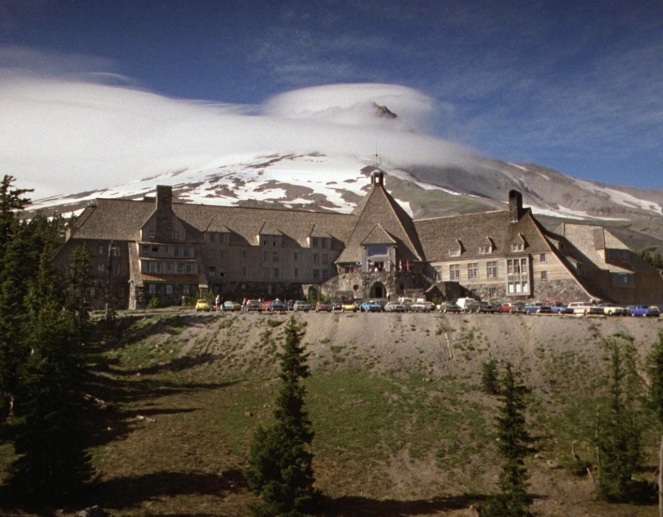
Nowadays it is infamous for the connection to The Shining and has a reputation as being one of America’s most haunted hotels. It has been depicted many times in various articles, ghost hunting documentaries and people often share their experience staying at the hotel on YouTube. Stephen King wasn’t happy with the film adaptation and instead wrote The Shining TV miniseries in which The Stanley was used as the Overlook Hotel. It’s fair to say that these various portrayals across media outlets have affected the way this location is perceived, so much so that the hotel itself now offers haunted tours and the ghost stories are something they now embrace. In fact, when King visited the hotel it was in an ever-declining condition so the interest and tourism that came about because of The Shining’s popularity (including 1980 film) essentially saved the hotel.
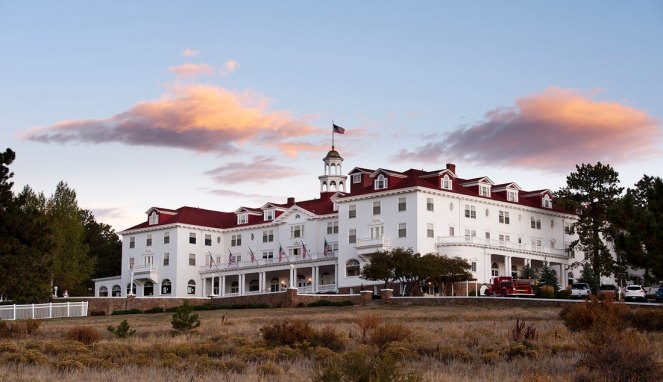
It is impossible to not associate this place with the paranormal, regardless of whether you believe in it or not and as ‘The Shining hotel’. Even though many people have never read the book, the copious referrals to The Stanley in connection with the story means that it’s often assumed to be used in the film. As a result, it’s quite difficult to perceive it as a ‘normal’ hotel. Even if you’d never heard of it, the second you come across it, the reputation and stories will always be referenced (through the media, word of mouth or just at the hotel itself).
____________
Linking with the research above, I was also asked to look at Room One: Urban, pages 34 & 35 of Place (Tacita Dean, Jeremy Millar).
These pages look at British artist, Liam Gillick, whose work often focuses on the effect that places have on our social interaction. His worked ‘Pain in a Building’ is made up of a series of photographs, taken at Thamesmead (1960’s housing estate on the outskirts of London). It had a utopian vision but is probably more recognised as a location for multiple scenes in the dystopian film, A Clockwork Orange (also Stanley Kubrick). The film was actually was pulled from distribution in Britain after a short period because Kubrick was concerned that the vision of Britain being portrayed would encourage violence and social unrest. Gillick uses location and reimagines to bring about new forms of place and in turn, they are often then perceived differently.
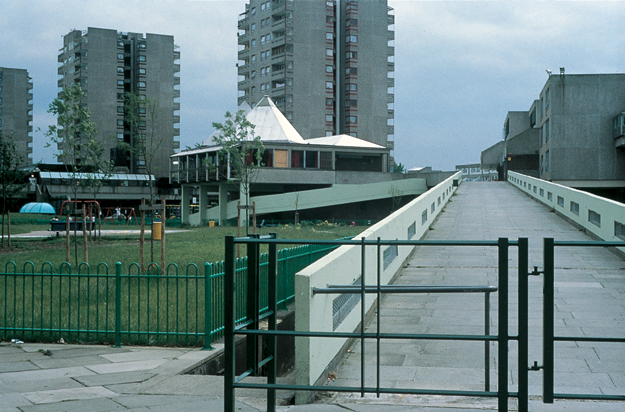
I chose to base this exercise on Tik Tok, a social media app for short videos (comedy, lip-syncing, talent and challenges). The platform has grown massively in popularity recently, particularly with the younger generation and perhaps those who’d like to follow in the footsteps of social media influencers.
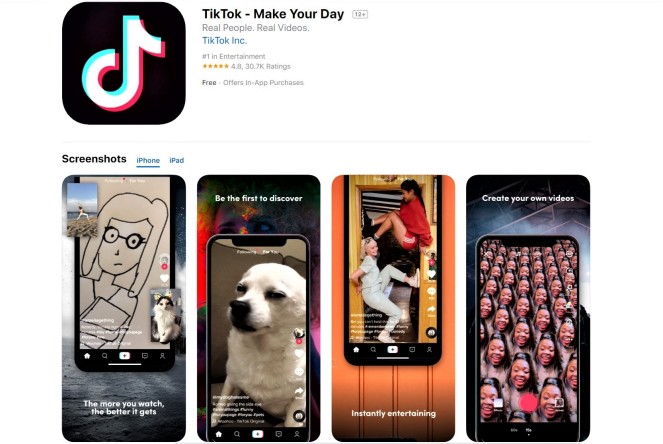
What characterises it as new?
Are there any direct lines of influence from other contemporary artefacts – or historical ones?
What factors may lead to it becoming ‘last year’s thing? What aspect of the design will age first?
The Here and Now
The ‘here and now’ refers to a change of style, fashion or even changes in communication, like social media and the use of computers.
Visual communicators work on the cutting edge of visual culture to use new ideas and looks, however, they abandon them just as quick due to the everchanging styles. The web design of creating a ‘skin’ allows new aesthetic changes to be made and altered, whilst maintaining the underlying structure. An example of this is newspapers as the way we interact with them has changed but the traditional, old-style still exists. There is a cyclical feel to reinvention and the ideas/styles that are well-established will often re-emerge.
The Future
Predicting and shaping future plans for visual communication is something important for visual communicators, especially those that work with fashion and technological developments. It’s important to keep up to date, whether it’s a shift in consumer behaviour, changing tastes or new ways of broadcasting. The aim is to identify trends and incorporate the latest ideas, look or technology as soon as possible.
Semiotic analysis uses the idea of denotation and connotation to describe literal and implied meanings within the visual.
Denotation – describes what can be seen and its literal interpretation (eg. a piece of fruit called an apple)
Connotation – describes the possible meanings that are suggested by the literal elements (eg. in a Renaissance painting, an apple might symbolise temptation)
– Early 1900s ‘Saucy’ seaside postcards (Bamforth Postcards) example of play between denotation and connotation – images presenting innocent incidents were given new meanings through sexual innuendo.
Join The Navy

Denotation –
Connotation –
For my own example, I decided to look at vintage adverts as I know many of them could have various interpretations, and some would certainly not be allowed in society today.

Denotation –
Connotation –
I also asked some of my family members, all of which agreed that it’s hard not to see the advert as being sexist due to the stereotyping of women being housewives and enjoying cleaning and keeping the home presentable.